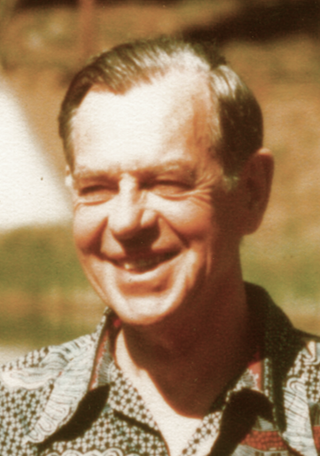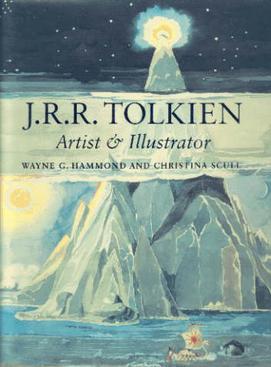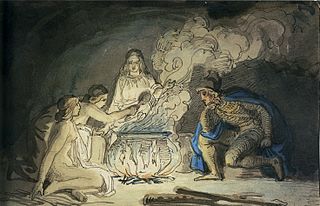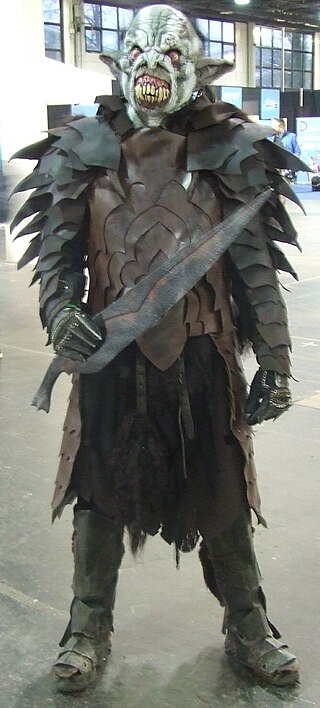
Joseph John Campbell was an American writer. He was a professor of literature at Sarah Lawrence College who worked in comparative mythology and comparative religion. His work covers many aspects of the human condition. Campbell's best-known work is his book The Hero with a Thousand Faces (1949), in which he discusses his theory of the journey of the archetypal hero shared by world mythologies, termed the monomyth.

Edward John Moreton Drax Plunkett, 18th Baron Dunsany, commonly known as Lord Dunsany, was an Anglo-Irish writer and dramatist. He published more than 90 books during his lifetime, and his output consisted of hundreds of short stories, plays, novels, and essays; further works were published posthumously. Having gained a name in the 1910s as a writer in the English-speaking world, he is best known today for the 1924 fantasy novel The King of Elfland's Daughter, and his first book, The Gods of Pegāna, which depicts a fictional pantheon. Many critics feel his early work laid grounds for the fantasy genre.
"On Fairy-Stories" is a 1947 essay by J. R. R. Tolkien which discusses the fairy story as a literary form. It was written as a lecture entitled "Fairy Stories" for the Andrew Lang lecture at the University of St Andrews, Scotland, on 8 March 1939.
Religion and mythology differ in scope but have overlapping aspects. Both are systems of concepts that are of high importance to a certain community, making statements concerning the supernatural or sacred. Generally, mythology is considered one component or aspect of religion. Religion is the broader term: besides mythological aspects, it includes aspects of ritual, morality, theology, and mystical experience. A given mythology is almost always associated with a certain religion such as Greek mythology with Ancient Greek religion. Disconnected from its religious system, a myth may lose its immediate relevance to the community and evolve—away from sacred importance—into a legend or folktale.

Classical mythology, also known as Greco-Roman mythology or Greek and Roman mythology, is the collective body and study of myths from the ancient Greeks and ancient Romans. Mythology, along with philosophy and political thought, is one of the major survivals of classical antiquity throughout later, including modern, Western culture. The Greek word mythos refers to the spoken word or speech, but it also denotes a tale, story or narrative.

J. R. R. Tolkien: Artist and Illustrator is a collection of paintings and drawings by J. R. R. Tolkien for his stories, published posthumously in 1995. The book was edited by Wayne G. Hammond and Christina Scull. It won the 1996 Mythopoeic Scholarship Award for Inklings Studies. The nature and importance of Tolkien's artwork is discussed.

The Mythopoeic Awards for literature and literary studies are given annually for outstanding works in the fields of myth, fantasy, and the scholarly study of these areas. Established by the Mythopoeic Society in 1971, the Mythopoeic Fantasy Award is given for "fiction in the spirit of the Inklings", and the Scholarship Award for non-fiction work. The award is a statuette of a seated lion, with a plaque on the base. It has drawn resemblance to, and is often called, the "Aslan".

Historical fantasy is a category of fantasy and genre of historical fiction that incorporates fantastic elements into a more "realistic" narrative. There is much crossover with other subgenres of fantasy; those classed as Arthurian, Celtic, or Dark Ages could just as easily be placed in historical fantasy. Stories fitting this classification generally take place prior to the 20th century.

Fantasy literature is literature set in an imaginary universe, often but not always without any locations, events, or people from the real world. Magic, the supernatural and magical creatures are common in many of these imaginary worlds. Fantasy literature may be directed at both children and adults.

The Mythopoeic Society (MythSoc) is a non-profit organization devoted to the study of mythopoeic literature, particularly the works of J. R. R. Tolkien, Charles Williams, and C. S. Lewis. These men were all members of The Inklings, an informal group of writers who met weekly in Lewis' rooms at Magdalen College, Oxford, from the early 1930s until late 1949.

Paul Harold Kocher was an American scholar, writer, and professor of English. He wrote extensively on the works of J. R. R. Tolkien as well as on Elizabethan English drama, philosophy, religion, and medicine. His numerous publications include studies of Christopher Marlowe and Francis Bacon. He also authored books on the Franciscan missions of 18th- and 19th-century California.

Beyond the Fields We Know is a collection of fantasy short stories by Irish writer Lord Dunsany, and edited by Lin Carter. The title is derived from a description of the location of the border of Elfland used over one hundred times in Lord Dunsany's best-known novel, The King of Elfland's Daughter. It was first published in paperback by Ballantine Books as the forty-seventh volume of its Ballantine Adult Fantasy series in May 1972. It was the series' fourth Dunsany volume, and the second collection of his shorter fantasies assembled by Carter.

In the Land of Time and Other Fantasy Tales is a posthumous collection of short stories by the writer Lord Dunsany in the Penguin Classics series. It was published in 2004. Edited and with an introduction by S. T. Joshi, it assembles material from across Dunsany's long career. The cover illustration is a colourised version of a classic illustration for an early Dunsany story by his preferred artist, Sidney Sime.
J. R. R. Tolkien's fantasy books on Middle-earth, especially The Lord of the Rings and The Silmarillion, drew on a wide array of influences including language, Christianity, mythology, archaeology, ancient and modern literature, and personal experience. He was inspired primarily by his profession, philology; his work centred on the study of Old English literature, especially Beowulf, and he acknowledged its importance to his writings.

The Road to Middle-Earth: How J. R. R. Tolkien Created a New Mythology is a scholarly study of the Middle-earth works of J. R. R. Tolkien written by Tom Shippey and first published in 1982. The book discusses Tolkien's philology, and then examines in turn the origins of The Hobbit, The Lord of the Rings, The Silmarillion, and his minor works. An appendix discusses Tolkien's many sources. Two further editions extended and updated the work, including a discussion of Peter Jackson's film version of The Lord of the Rings.

Myth is a genre of folklore consisting primarily of narratives that play a fundamental role in a society. For scholars, this is very different from the vernacular usage of the term "myth" that refers to a belief that is not true. Instead, the veracity of a myth is not a defining criterion.
Mythology is the term often used by fans of a particular book, television, or film series to describe a fiction franchise's overarching plot and often mysterious backstory. Daniel Peretti argues that mythology "is often used emically to refer to back story". The term was pioneered by the American science fiction series The X-Files, which first aired in 1993. With this being said, many other forms of media have some sort of mythology, and the term is often applied in regards to Buffy the Vampire Slayer, Lost, and the Batman and Superman comics, among others.

Although fantasy had long existed in various forms around the world before his time, J. R. R. Tolkien has been called the "father of fantasy", and The Lord of the Rings its centre. That novel, published in 1954–5, enormously influenced fantasy writing, establishing in particular the form of high or epic fantasy, set in a secondary or fantasy world in an act of mythopoeia. The book was distinctive at the time for its considerable length, its "epic" feel with a cast of heroic characters, its wide geography, and its battles. It involved an extensive history behind the action, an impression of depth, multiple sentient races and monsters, and powerful talismans. The story is a quest, with multiple subplots. The novel's success demonstrated that the genre was commercially distinct and viable.


















